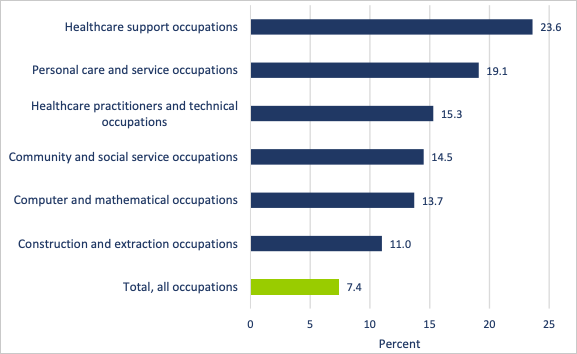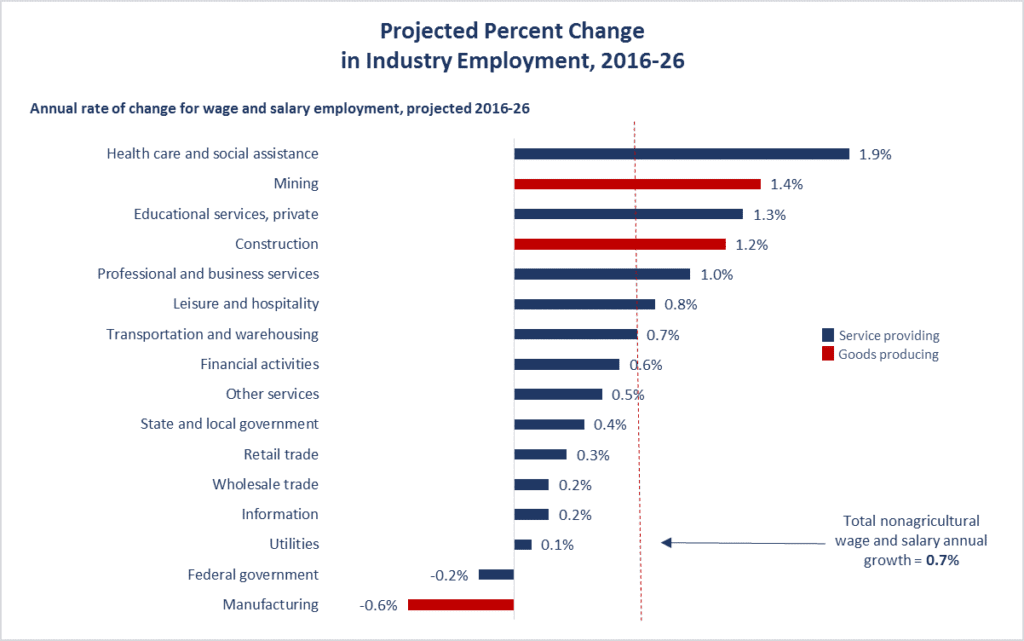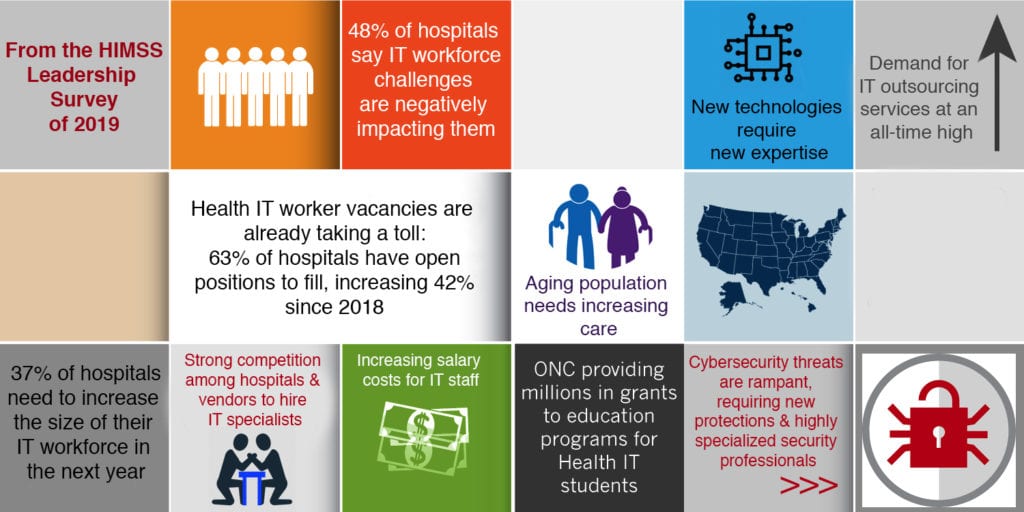Products

Who We Serve
June 28, 2019
While it’s great news that healthcare jobs will be among the fastest growing through 2026, the plethora of jobs is a double-edged sword. The projected supply of qualified workers will not fill the demand, and as any hospital CIO can attest, the shortage of qualified workers in healthcare IT is nearly as worrisome as the growing paucity of clinical professionals. Staffing shortages have plagued the healthcare industry for years, but according to the Bureau of Labor Statistics’ employment projections for 2016 to 2026, the demands will grow to crisis levels in many states. Healthcare is projected to add nearly 4 million jobs during the period, about one-third of all new jobs — making it our largest sector. Healthcare technology jobs are a big piece of the pie, primarily because of the proliferation of EHRs and innovations in a variety of other computer technologies, plus the accompanying surge of cybercrime. Here’s what you should know based on the latest statistics.
Healthcare support occupations (23.6 percent) and healthcare practitioners and technical occupations (15.3 percent) are projected to be among the fastest growing occupational groups during the 2016–26 projections decade. Computer and information systems managers jobs are expected to grow 13.7 percent across all industries, faster than the average for all occupations. To provide a national context, overall employment is projected to increase only by .7 percent over the 2016-26 decade, an increase from 156.1 million to 167.6 million, per the U.S. Bureau of Labor Statistics. Given the fact that healthcare will shortly be our largest industry sector, indications are that the growth level of healthcare computer and information systems management jobs will be equal to this percentage or in that ballpark.
Projected percent change in industry employment – by select occupational groups, 2016-2026:


Demand for computer professionals and information systems managers will grow as hospitals and other providers are increasingly impacted by the following developments:
Some of the biggest factors causing this upheaval in HIT staffing availability are illustrated below:
 Tackling these challenges requires strong leadership and highly qualified IT specialists. Job opportunities will keep growing at mega rates for several years but so will the shortages of needed workers. Hospitals must find scalable solutions in order to stay viable, competitive and successful in providing the highest quality of healthcare possible to our communities.
Tackling these challenges requires strong leadership and highly qualified IT specialists. Job opportunities will keep growing at mega rates for several years but so will the shortages of needed workers. Hospitals must find scalable solutions in order to stay viable, competitive and successful in providing the highest quality of healthcare possible to our communities.
Coming soon! Watch for our follow-up blog post that will offer recommended solutions to the healthcare IT labor shortage for your consideration.
If you would like to learn about our hospital IT outsourcing solutions, please contact us here.